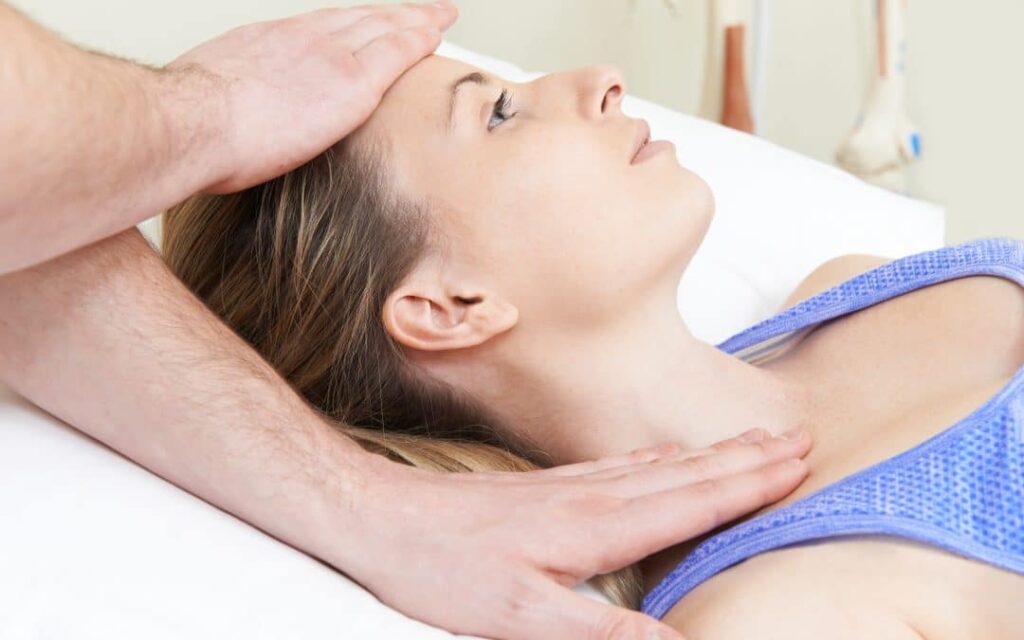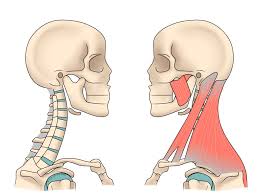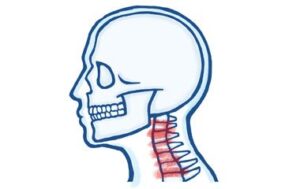

Neck tension—whether from marathon desk hours, stressful commutes, or ambitious gym sessions—has a knack for overstaying its welcome.
It can start as a mild tightness and quickly evolve into a stubborn stiffness that makes turning your head feel like moving a rusty hinge.
While painkillers and massages offer temporary relief, osteopathy takes a deeper dive.
Using hands-on techniques, osteopaths address not just the sore muscles but the wider body mechanics and nervous system factors that feed into your discomfort.
Think of it as a holistic tune-up where muscles, joints, circulation, and even your stress levels are coaxed back into harmony.
In this article, BestForwardHeadPostureFix would unpack how osteopathic techniques actually work to relieve muscle tension in the neck.
You would learn about the philosophy behind them, the main methods used, why they are effective, and the long-term benefits that extend beyond pain relief.
With real-world examples and a touch of wit, this guide will help you understand how osteopathy can transform nagging stiffness into newfound freedom of movement.
Article Index
- Understanding Muscle Tension in the Neck
- The Osteopathic Philosophy: Treating the Whole Body
- Common Causes of Cervical Muscle Tightness
- How Osteopaths Assess Neck Dysfunction
- Soft Tissue Techniques for Muscle Relaxation
- Myofascial Release and Its Impact on Flexibility
- Muscle Energy Techniques for Cervical Alignment
- High-Velocity Low-Amplitude (HVLA) Adjustments for Neck Care
- The Role of Lymphatic and Circulatory Techniques
- Neurological Benefits: Calming the Nervous System
- Patient Experiences and Case Studies
- When to Seek Osteopathic Care for Neck Tension
- Safety Considerations and Contraindications
- Long-Term Benefits Beyond Pain Relief
- Practical Tips to Complement Osteopathic Treatment
- Conclusion: A Holistic Path to Neck Relief
Understanding Muscle Tension In The Neck
Picture yourself hunched over your laptop for hours.
Your trapezius, levator scapulae, and sternocleidomastoid muscles are staging a mutiny—tight, rigid, and not letting up.
Reduced blood flow and irritated nerves only fuel the fire, turning what should be a simple task, like checking blind spots while driving, into an ordeal.
Osteopathy steps in by looking at the big picture.
Instead of seeing stiff muscles as isolated culprits, osteopaths recognize the whole orchestra—posture, breathing, stress, and spinal mechanics—all playing a part in your discomfort.
The Osteopathic Philosophy: Treating The Whole Body
Osteopathy doesn’t believe in quick band-aids.
Its philosophy?
Your body is one connected system, and dysfunction in one area can ripple into another.
A sore neck might be fueled by shoulder imbalances, spinal alignment quirks, or even poor breathing mechanics.
Osteopaths act like body detectives, searching for these imbalances and restoring flow.
By treating the whole system, osteopathy does not just relieve the current tension—it helps prevent tomorrow’s stiffness from setting up camp.
Common Causes Of Cervical Muscle Tightness
- Forward head posture: The modern classic. Think leaning tower of neck.
- Stress and anxiety: Triggering those “invisible shoulder shrug” moments.
- Repetitive tasks: Long drives, marathon typing, or phone scrolling.
- Trauma: Whiplash or old sports injuries still leaving scars.
- Spinal conditions: Underlying issues like disc wear and tear.
Each cause has its own twist, which is why osteopathic treatment is never cookie-cutter—it is custom-tailored.
How Osteopaths Assess Neck Dysfunction?
Assessment is half the magic. First comes a thorough history: when the pain began, how it behaves, and your lifestyle quirks.
Next is the physical exam—palpation, posture checks, and range-of-motion tests.
Osteopaths feel for restrictions, tight spots, and compensations across the whole body.
It’s like being a musculoskeletal detective—except instead of crime, they are solving the mystery of your stiff neck.
Soft Tissue Techniques For Muscle Relaxation
This is the osteopathic “massage but smarter.” Rhythmic stretching, kneading, and traction help hypertonic muscles unclench.
Blood flow improves, spasms settle, and muscles rediscover their ability to lengthen.
Patients often walk away feeling instantly lighter.
It is what many describe as “that warm, melting sensation” spreading through their neck.
No surprise that “soft tissue manipulation for stiff neck” is a top-searched phrase.
Myofascial Release And Its Impact On Flexibility
Fascia, the clingy connective tissue wrapping muscles, can bind and restrict motion.
Myofascial release gently but persistently loosens these sticky spots.
For patients with long-term stiffness, this technique is gold. It restores glide between tissues, reducing nerve irritation and improving flexibility.
It is the answer to the question: “what are the benefits of myofascial release for cervical pain?”
Muscle Energy Techniques For Cervical Alignment
Muscle Energy Techniques (METs) are teamwork at its best.
The patient contracts a muscle against resistance, and the osteopath uses the recoil to stretch and reset it.
Say your sternocleidomastoid is tight.
You contract it gently, the osteopath resists, and then lengthens it.
Suddenly, your neck feels aligned and balanced.
This is why “how does muscle energy technique relieve neck pain” is a phrase both patients and Google love.
High-Velocity Low-Amplitude (HVLA) Adjustments For Neck Care
These are the “quick flicks” everyone thinks of when they imagine osteopathy. But HVLA is not the aggressive cracking stereotype.
Instead, it is a precise, swift movement restoring motion in a locked joint.
Patients often describe an immediate sense of lightness—as if a weight has been lifted off their neck.
For those Googling “HVLA adjustments for chronic neck tightness,” this is exactly the technique they’re after.
The Role Of Lymphatic And Circulatory Techniques
Tight muscles often trap fluids, leading to swelling and sluggish healing.
Gentle pumping and drainage techniques improve circulation and lymph flow, flushing out waste and bringing in oxygen.
The result? Reduced stiffness, less fatigue, and even fewer tension headaches.
It is a mini-reset button for your neck’s plumbing system.
Neurological Benefits: Calming the Nervous System
Stress tightens your neck like a guitar string.
Cranial osteopathy and other gentle methods flip the switch from “fight-or-flight” to “rest-and-digest.” The nervous system unwinds, and the muscles follow.
That’s why “cranial osteopathy for stress-induced neck stiffness” is growing in popularity—it targets the nervous system just as much as the muscles.
Patient Experiences And Case Studies
- The Office Dynamo: Anna, 42, plagued by desk-job stiffness, found that six sessions of soft tissue and METs not only eased her neck but also reduced migraines.
- The Athletic Commuter: Raj, 29, a CrossFit enthusiast, used myofascial release and HVLA to overcome shoulder imbalance. The bonus? Better sleep and performance.
- The Stressed Teacher: Melissa, navigating exam-season anxiety, discovered cranial osteopathy melted both her neck tension and mental stress.
When to Seek Osteopathic Care for Neck Tension?
If your neck stiffness is constant, paired with headaches, or limits daily tasks—it’s time to call an osteopath. Especially when:
- Painkillers are only quick fixes.
- Stress consistently triggers your discomfort.
- You catch yourself in “vulture neck” posture often.
- Physical therapy hasn’t delivered lasting results.
Safety Considerations and Contraindications
Osteopathy is safe for most—but not for everyone.
Conditions like severe osteoporosis, fractures, or spinal cord compression require caution.
The good news?
A skilled osteopath screens for these before any technique is used.
Long-Term Benefits Beyond Pain Relief
Osteopathy offers more than just “less pain today.” It brings:
- Better posture habits.
- Fewer recurring flare-ups.
- Reduced stress reactivity.
- Improved day-to-day movement.
That means bending, turning, or even scrolling your phone feels more effortless.
Practical Tips to Complement Osteopathic Treatment
- Check ergonomics: Keep that screen at eye level.
- Take stretch breaks every 30–40 minutes.
- Stay hydrated: supple tissues are happy tissues.
- Breathe mindfully: shoulders down, lungs open.
- Follow-up exercises: those tiny stretches your osteopath recommends? Gold.
Conclusion: A Holistic Path to Neck Relief
Neck tension may masquerade as a small problem, but it is often your body waving a red flag.
Osteopathic techniques address not just the knot in your muscles but the entire system fueling it.
Soft tissue work restores elasticity, myofascial release frees adhesions, METs align, HVLA unlocks, and cranial methods calm the nervous system.
Together, they create a powerful cocktail of relief and resilience.
The real charm of osteopathy lies in its holistic approach.
Patients do not just leave with a looser neck—they often gain better posture, improved sleep, and a calmer mind.
Whether you’re a desk warrior, athlete, or just someone tired of waking up stiff, osteopathy offers a personalized path to feeling better.
Pair it with smart lifestyle tweaks, and neck tension doesn’t stand a chance.
References:

